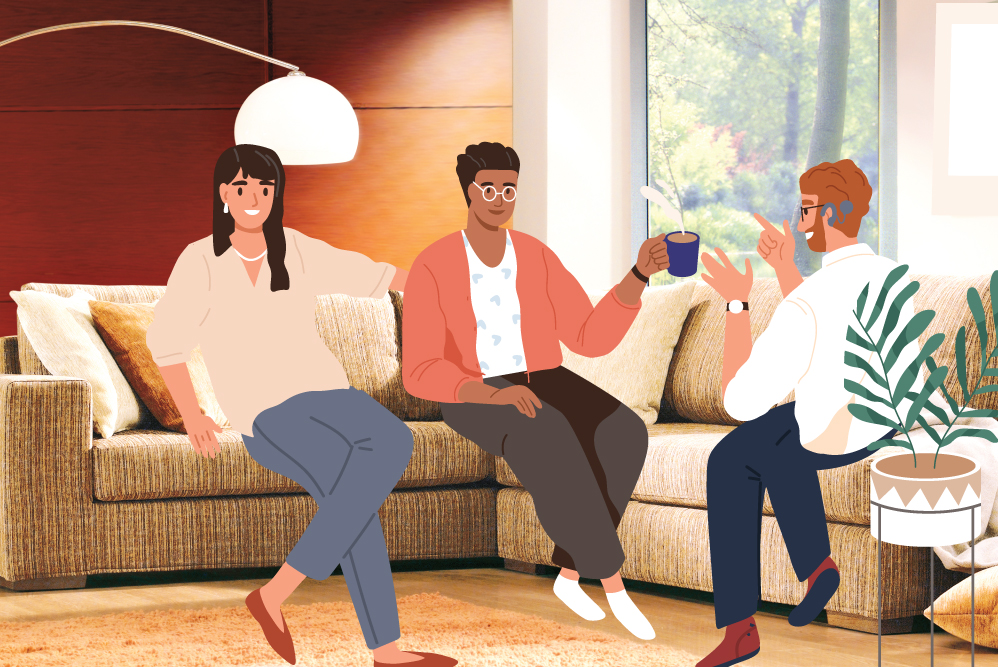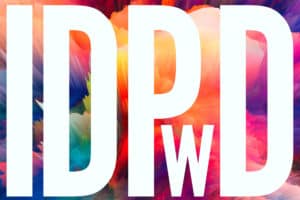
The Difference Between d/Deaf and Hard-of-Hearing
You’ve probably seen numerous terms used to describe a person with hearing loss, including ‘Deaf’ with an uppercase d, ‘deaf’ with a lowercase d, and ‘hard-of-hearing’.
But what do they all mean, and how are they different?
In this article, we explore the different terms used in the d/Deaf and hard-of-hearing community, the significance of Deaf culture, and how you can make life more accessible for d/Deaf and hard-of-hearing people.
Terms
‘Deaf’ (uppercase D)
The ‘uppercase D’ Deaf is used to describe people who identify as culturally Deaf and are actively engaged with the Deaf community. Deaf with a capital D indicates a cultural identity for people with hearing loss who share a common culture and who usually have a shared sign language.
People who identify as Deaf are often born deaf and sometimes have other family members who are deaf. However, there are many people who may have hearing parents or were not born deaf but lost their hearing later in life and have become part of the Deaf community.
Deaf people often prefer to use sign language and it may be their first language. Deaf people have often attended schools and programs for the deaf community, where they had the chance to immerse themselves in Deaf culture.
People who are Deaf often take great pride in their Deaf identity. Some do not refer to their deafness as a disability, but others do.
‘deaf’ (lowercase d)
The ‘lowercase d’ deaf simply refers to the physical condition of having hearing loss. People who identify as deaf with a lowercase ‘d’ don’t always have a strong connection to the Deaf community and don’t always use sign language. They may prefer to communicate with speech.
There are a variety of reasons why a person identifies as deaf with a lowercase ‘d’. For instance, they may have been born to hearing parents and grown up in the hearing world with little or no exposure to the Deaf community.
‘Hard-of-Hearing’
Hard-of-hearing is a widely-accepted term to describe mild to moderate hearing loss. A person who is hard-of-hearing often does not use sign language as their first or preferred language. This may be due to them never having the opportunity to learn a sign language, or preferring not to.
Someone with mild to moderate hearing loss may identify as Deaf and be involved in Deaf culture and the Deaf community. Likewise, someone who has a very small amount of hearing or no hearing may like to identify as hard-of-hearing, rather than deaf or Deaf.
Ultimately, each individual person has their own preferred term for how they identify themselves. If you’re unsure about how someone identifies themselves, just ask!
Hearing Impaired
Hearing impaired is another term that is sometimes used to describe a person with hearing loss, but many people in the d/Deaf and hard-of-hearing community find the term offensive. This is because of the implication it holds of being ‘impaired’.
There are some people with hearing loss who are comfortable with this term and self-identify as hearing impaired. However, it’s best to avoid using it when referring to someone else.
Access for d/Deaf and Hard-of-Hearing Communities
In our world that centers around ‘hearing’ communities (i.e., those that are not d/Deaf or hard-of-hearing), access to services and information for d/Deaf communities is, unfortunately, often ignored.
If you are a hearing person, consider how much you depend on sound in your everyday life: announcements on public transport are made over a loudspeaker, in-person conversations are usually spoken without going down in writing or through an interpreter, and social media videos and free-to-air television are rarely captioned or interpreted (though this is getting better)!
This lack of accessibility of everyday situations makes life much more difficult if you are d/Deaf or hard-of-hearing. This is why accessibility is so important!
How to Make Everyday Life Accessible in Support of d/Deaf Communities
There are many ways you can make information and services accessible to d/Deaf and hard-of-hearing communities.
Start with a few basics:
- Caption your videos, live streams, events and meetings
Adding closed captions is a simple way to make sure that there is a text alternative for people to rely on.
- Transcribe videos and meetings
Transcription makes your content or meetings accessible after the fact and can be used by Deaf and DeafBlind audiences.
- Check in to see whether you should hire an interpreter for any events or meetings
Many Deaf people like to have the option of an interpreter for events or important meetings. Ask them what their preference is.
- Learn some basic signs in your region’s sign language
This is easy, and fun!
Ai-Media can assist you with the above points! For more information on our accessibility services, just get in touch!
And for more on how to be accessible and ‘Deaf-aware’, read our articles Tips for Being Deaf-Aware: Part 1 and Part 2.










